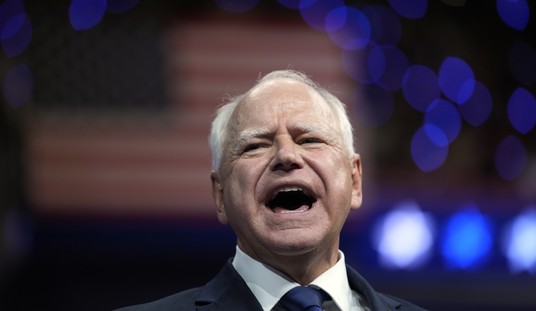For the last six years, the EPA has assumed the jurisdiction to regulate carbon emissions by citing the Clean Air Act (CAA), an assumption that state Attorneys General have repeatedly challenged in court. Now that Scott Pruitt, recently confirmed by the Senate after his tenure as Oklahoma’s AG, told a Houston conference that he plans to get an answer to the question:
The new head of U.S. Environmental Protection Agency called into question that agency’s legal right to regulate carbon dioxide emissions, a signature effort by the Obama administration.
In a speech Thursday to a room full of energy executives in Houston for CERAweek by IHS Markit, EPA Administrator Scott Pruitt said there is a “fundamental question” about whether Congress gave the agency the authority to “deal with the Co2 issue.”
“It’s a question that needs to be asked and answered,” Mr. Pruitt said.
The Obama administration had the EPA assert this jurisdiction in January 2011 by classifying carbon dioxide — a natural element in the atmosphere — as a pollutant. The move followed a failed effort in the Democratic-controlled Congress in 2009-10 to add carbon dioxide as a regulated emission to the CAA, despite having a filibuster-proof majority for several months in the Senate. In 2012, the DC Circuit Court of Appeals upheld the EPA’s decision on a unanimous decision, relying partly on a 2007 Supreme Court case that ordered the EPA to deal with tailpipe emissions of greenhouse gases, but which had stopped short of explicitly identifying CO2 as such.
That track record suggests that the “fundamental question” may already have an answer, at least in the current legal status quo. While conservatives may hail Pruitt’s reversal of this policy, there is a very substantial likelihood that it won’t last long, at least as far as Pruitt’s action goes. Without a doubt, AGs from states that want the EPA to act on carbon emissions will file their own lawsuit to force Pruitt to maintain the regulations and enforcement efforts of the past six years. In both of the court cases cited, states went to court to demand action from the EPA even as other states fought the expansion of the jurisdiction of the CAA, and they’ll be itching to have that fight in the Trump era.
Pruitt needs some help from Congress if he wants to curtail the EPA’s regulatory reach. The courts involved in both of these cases had room to act because of the overly broad and ambiguous language in the CAA about what constitutes a pollutant. Congress can solve that problem by passing an update to the CAA that excludes naturally occurring gases (or just specifically carbon dioxide) from the pollutant category, and render the controlling court cases moot. The only other option would be to take the chance that courts will change their minds about the earlier decisions, or that a Supreme Court with one or two Trump appointees will dispense with stare decisis and let Congress off the hook. The chances of that happening are somewhere between slim and none, and it’s a lot closer to the latter than the former.
Meanwhile, though, it remains to be seen whether Pruitt’s wait for an answer means a change in regulatory practice in the short run. Pruitt can certainly set enforcement policies and priorities in the absence of court orders to the contrary, although that 2012 decision might still be tough to work around. He could force states and activists groups to sue again and tie them up for a significant period of time while Congress acts to put tighter limits on the CAA. Pruitt should remember how that felt from the state AG side of the fight, but he may need to wait for a while to win at his new level, too.








Join the conversation as a VIP Member